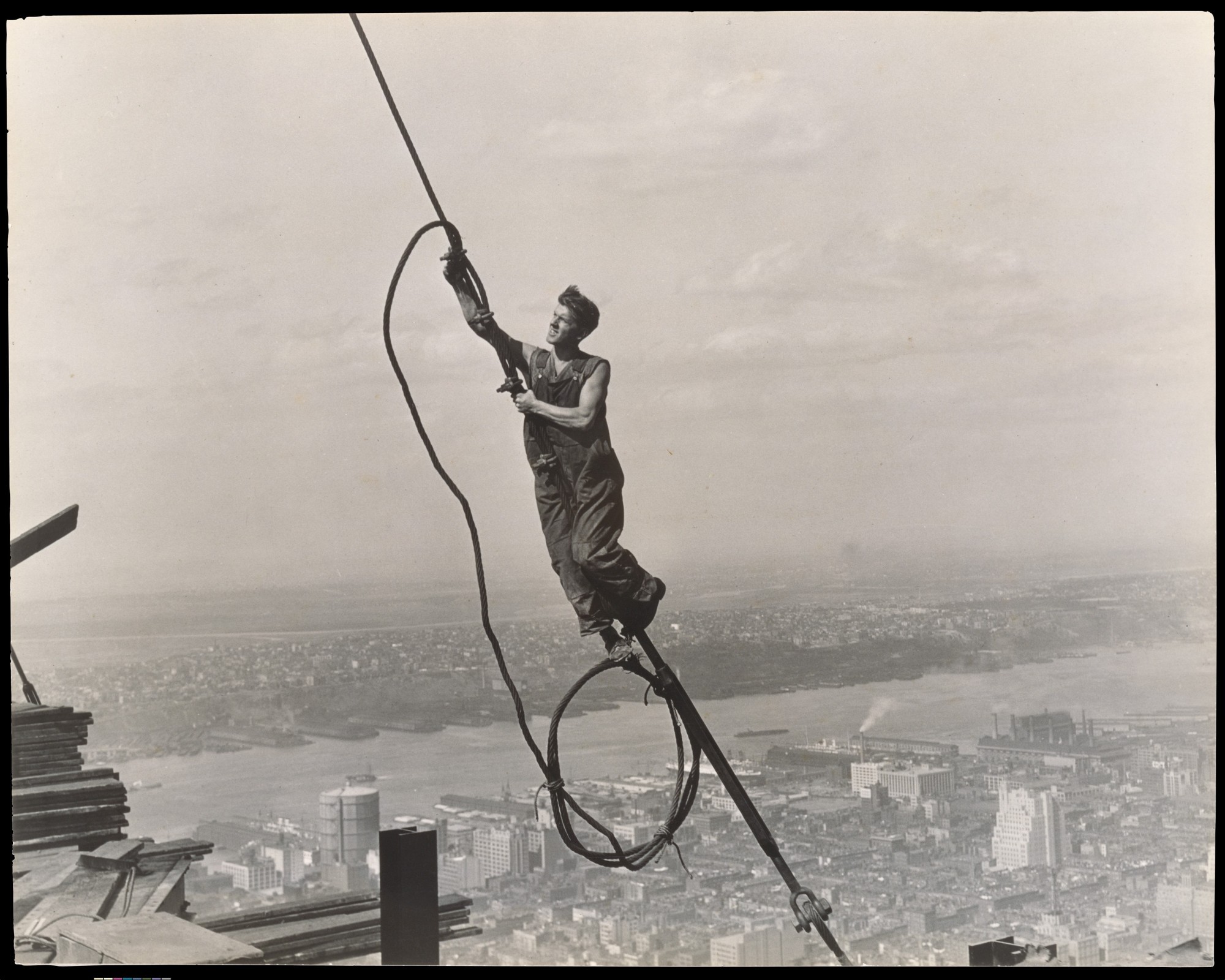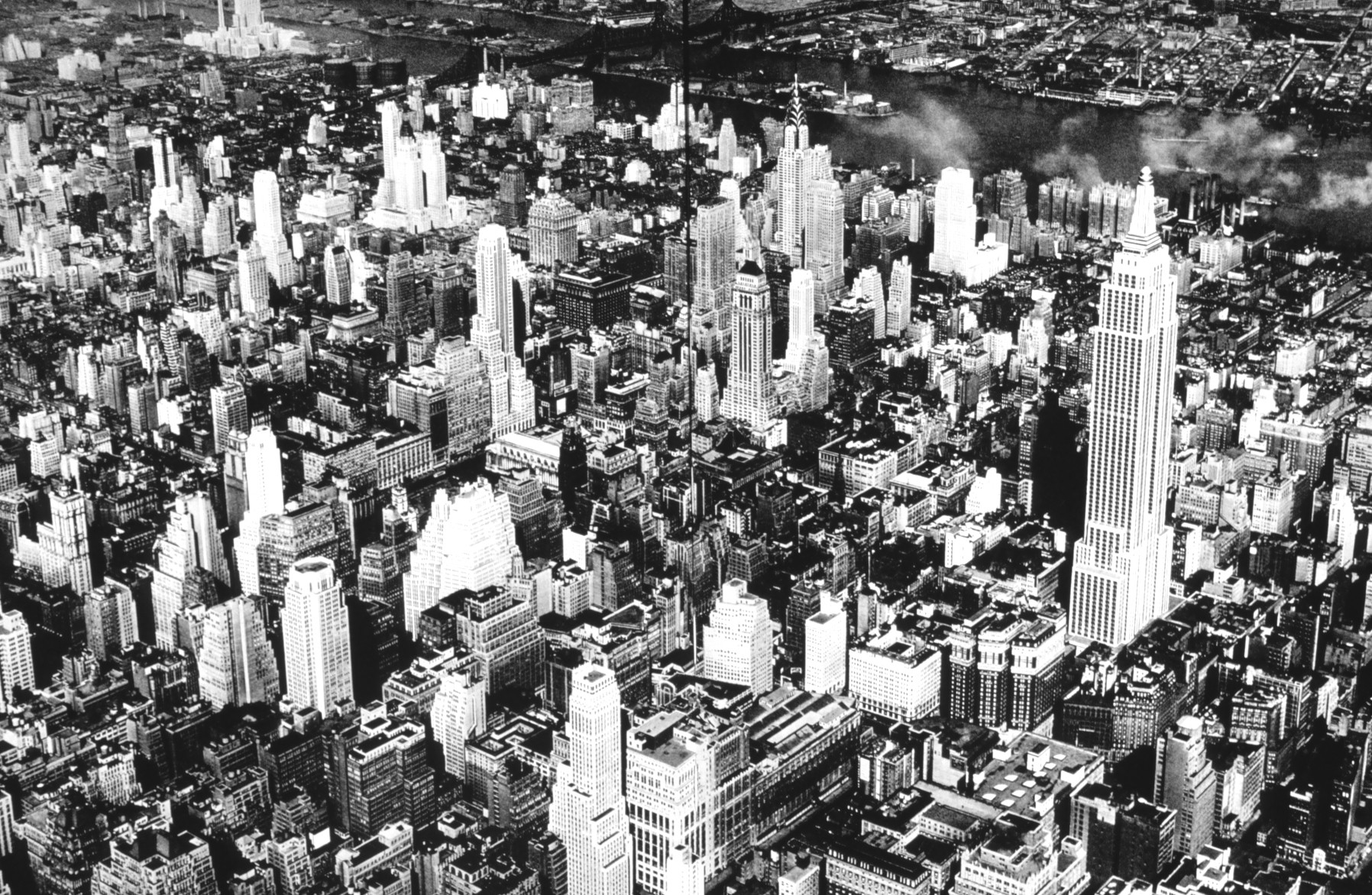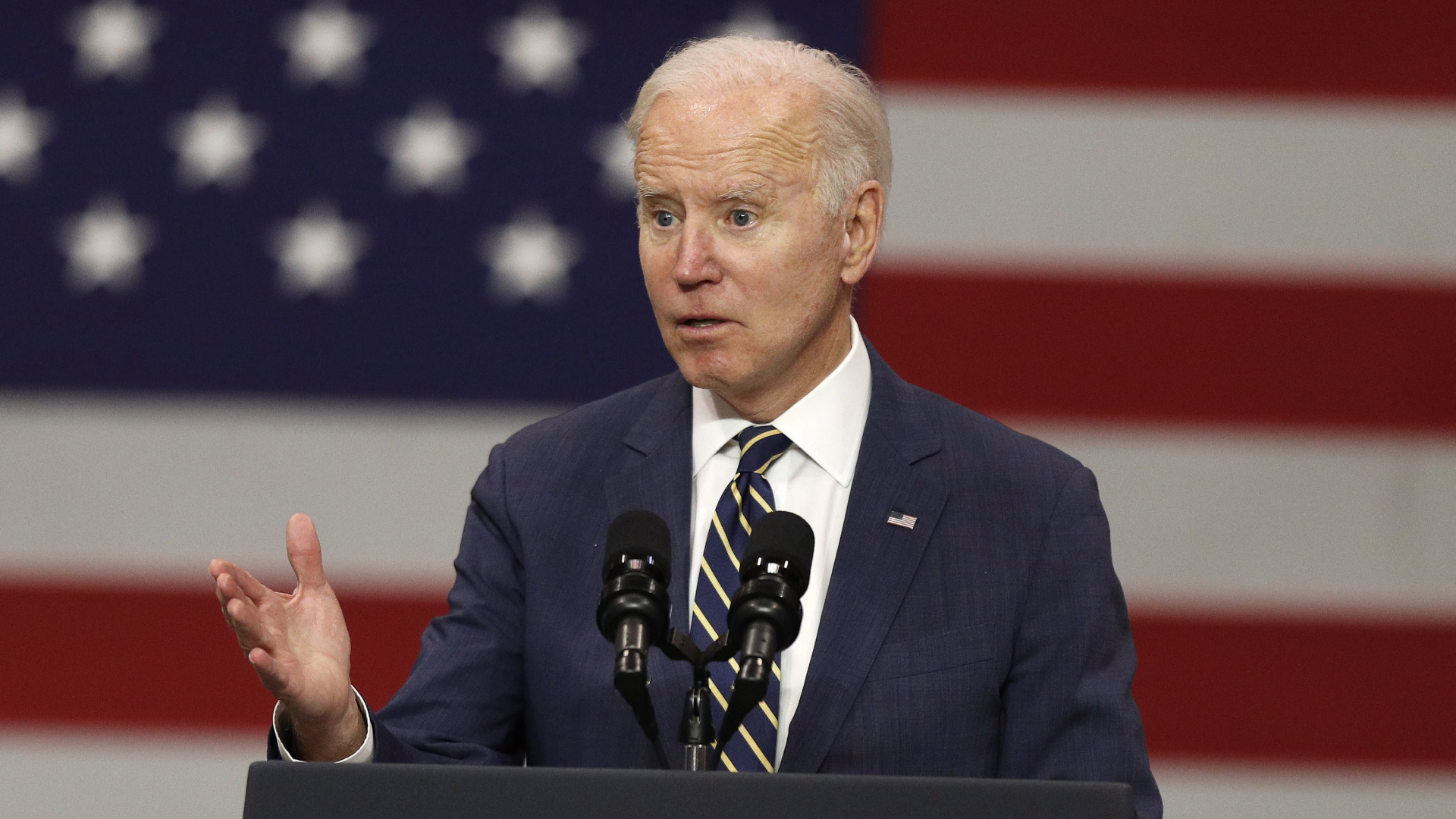Teaserbild-Quelle: United States Coast and Geodetic Survey, Public Domain,
The construction of the Empire State Building was a feat of planning and logistics. Film recordings over 90 years old tell of this and of everyday life on the construction site.
Compilation of footage by Youtube user Rick88888888. The photos were colorized afterwards.
It held a world record for around 40 years: with a height of 443 meters, the Empire State Building in New York took first place from 1931 to 1972 among the tallest buildings in the world. Today, it still ranks among the top 50, at rank 47.
Investor John Jakob Raskob and Alfred E. Smith, former governor of New York, were behind the project. In 1929 they presented plans for a building that would trump the Chrysler Building, which was then under construction. The Empire State Building was originally designed to be 305 meters tall, but when the Chrysler Building was fitted with a spire that made it reach a height of around 319 meters, the plans of the builders of the Empire State Building also grew: it was rebuilt without further ado extended a 61 meter high tower.
Building zone regulations and shadows
–
Quelle: United States Coast and Geodetic Survey, Public Domain,
View of Manhattan around 1932. The Empire State Building is in the front right of the picture.
Incidentally, the Empire State Building owes its striking shape not only to the architect William F. Lamb, who designed various skyscrapers in New York, but above all to the building zone regulations of the time: This stipulated that the floor plan of New York’s skyscrapers taper upwards got to. This means that a straight facade could be a maximum of 37.5 meters high. This was to prevent skyscrapers from casting large shadows on their neighboring buildings.
Work on the foundation began in January 1930 and was completed after just three months. The actual construction could then begin in March. The tower grew rapidly: On average, the up to 3,400 workers on the construction site managed 4.5 floors per week. The tower has a total of 102 floors.
As was usual at the time, the Empire State Building consists of steel frames held together by a rivet structure; a total of 60,000 tons of steel were used for the tower. While limestone and granite were used for the facade, only the ceilings are made of concrete. – After around 20 months of construction, the time had come: in October 1931, the tower was ready for occupancy.
Lewis Hine’s Legendary Riveter

–
Source: Lewis Hine, file donated to Wikimedia Commons as part of partner project with the Metropolitan Museum of Art, CC0
One of Lewis Hine’s famous shots of the construction of the Empire State Building.
The Empire State Building is legendary in many ways. Not just because of its architecture, which provided an impressive setting for blockbusters such as “King Kong” or “E-Mail for You”, and not just because of the excellent logistics and planning, thanks to which the construction time was comparatively short. But also because of the men who built it.
John Jakob Raskob, among others, made sure of that by commissioning the photographer Lewis Hine to document the construction work. This resulted in images that have long since become icons of photography: riveters balancing with acrobatic elegance at dizzying heights on beams over the abyss. (See more on the website New York Public Library.) The fearless workers were usually Mohawk Indians, famous for their head for heights. (May)
–


